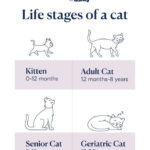Considering bringing a fluffy, blue-eyed companion into your home? Ragdoll cats, known for their gentle nature and striking appearance, are a popular breed for good reason. After spending three wonderful years with my own Ragdoll duo, Teemo and Arya, I’ve gathered ten crucial insights to help you decide if a “Rag Dolls Cat” is the perfect addition to your family.
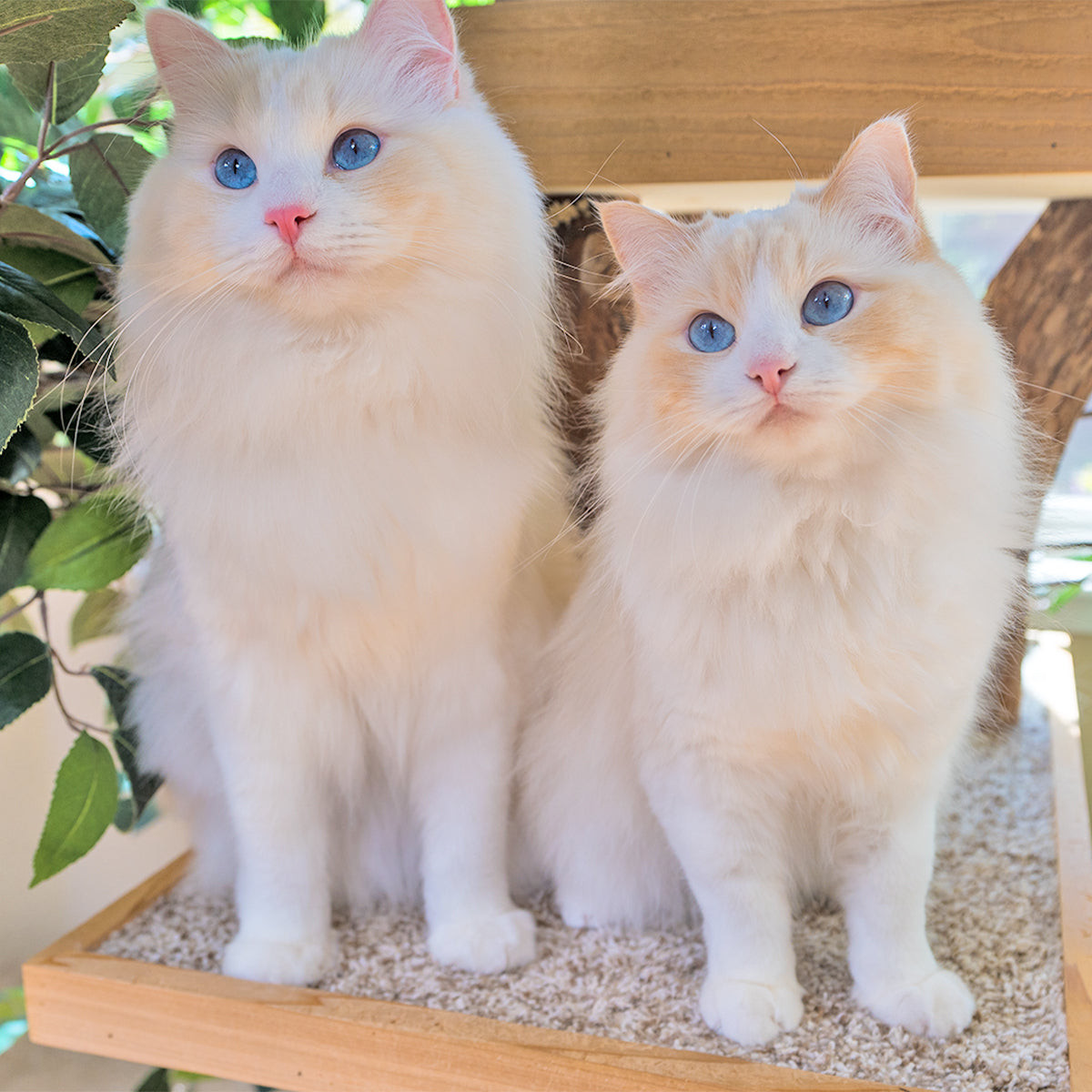 cream bicolor ragdoll cat
cream bicolor ragdoll cat
Two cream bicolor Ragdoll cats, Teemo and Arya, lying together, showcasing the gentle and affectionate nature of the breed.
1. The Origin of “Ragdolls”: Embracing the Floppy Nature
The name “Ragdoll” perfectly captures the breed’s most endearing trait: their tendency to go completely limp and relaxed when held, just like a child’s rag doll. This “floppy cat” characteristic is a hallmark of the breed. Unlike some cats who may resist being picked up, Ragdolls generally relish being cradled and held close. They are masters of relaxation and thrive on human attention and affection. When enveloped in loving arms, a Ragdoll cat will often melt into a state of blissful calmness. While most Ragdolls exhibit this delightful floppiness, it’s important to note that individual cats may vary, and not every Ragdoll will be equally floppy.
2. Puppy-Dog Personalities: Affectionate and Loyal Companions
Ragdoll cats are often described as having a “puppy-like” personality, and for good reason. They are known for being docile, gentle, and remarkably sweet-natured. These cats are exceptionally people-oriented; they thrive on companionship and often become deeply attached to their families. Much like dogs, Ragdolls may greet you at the door when you arrive home, seek out your lap for cuddles when you’re relaxing, or follow you from room to room throughout the house. This breed’s deep love for affection and close proximity to their humans makes them wonderful companions for children and compatible with other household pets, including dogs and other cats. Some Ragdolls even display playful canine-like behaviors such as enjoying a game of fetch.
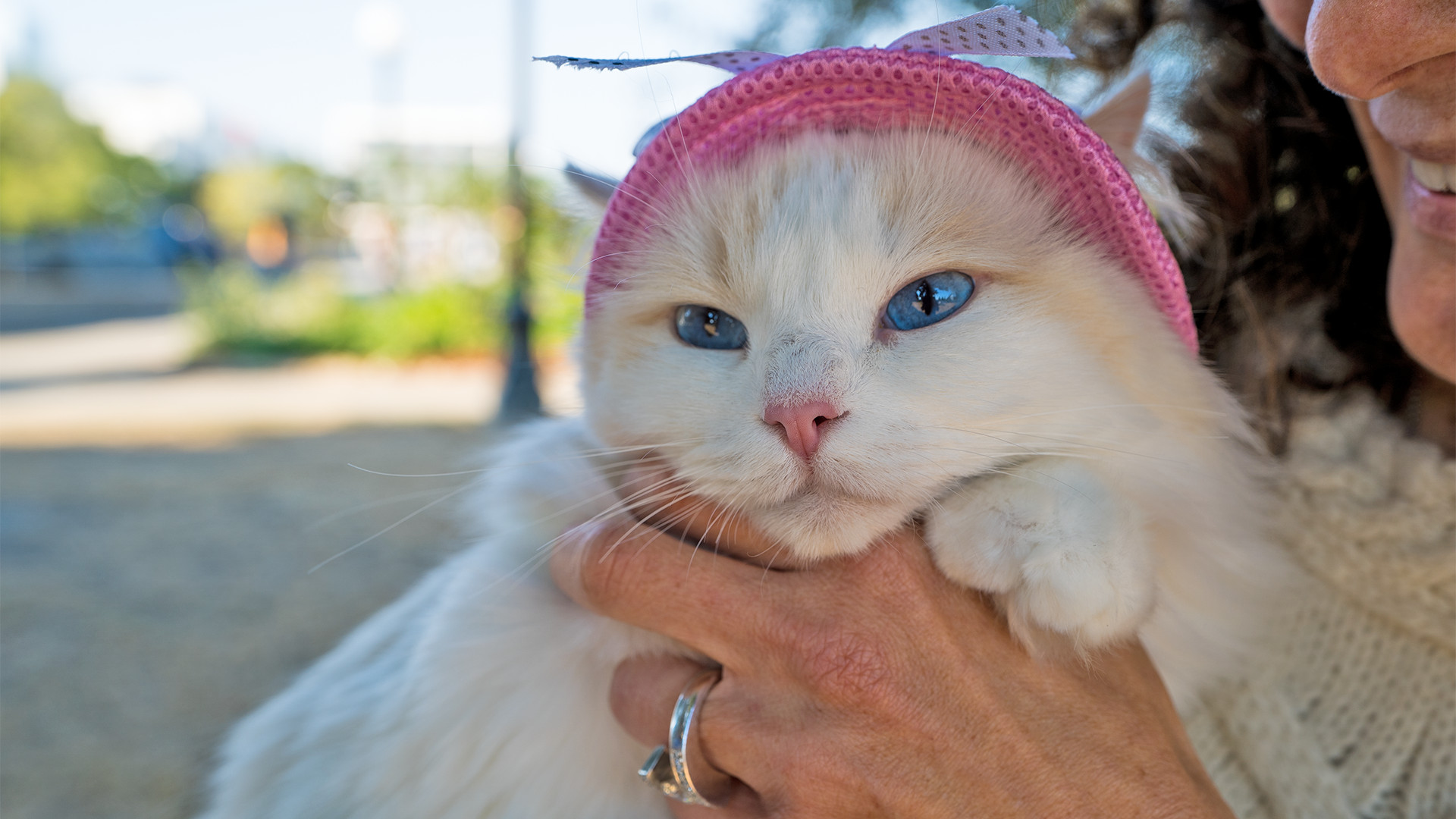 female cream bicolor ragdoll cat
female cream bicolor ragdoll cat
A cream bicolor Ragdoll cat, Olivia, wearing a festive hat, highlighting the breed’s gentle temperament and tolerance for gentle handling.
3. Striking Appearance: Blue Eyes and Colorpoint Coats
Ragdoll cats are undeniably beautiful felines. A defining feature of purebred Ragdolls is their captivating blue eyes, a breed standard that contributes significantly to their allure. Their coats are another key aspect of their striking appearance. Ragdolls exhibit four primary coat patterns: bicolor, van, mitted, and colorpoint. These patterns are further diversified by six main colors: seal, blue, chocolate, lilac, red, and cream. Interestingly, all Ragdoll kittens are born entirely white. Their distinctive colors and patterns gradually emerge as they mature, typically becoming more pronounced by 8 to 12 weeks of age. Adding to their charm, Ragdolls possess a semi-long coat that is luxuriously plush and silky to the touch, inviting endless petting sessions.
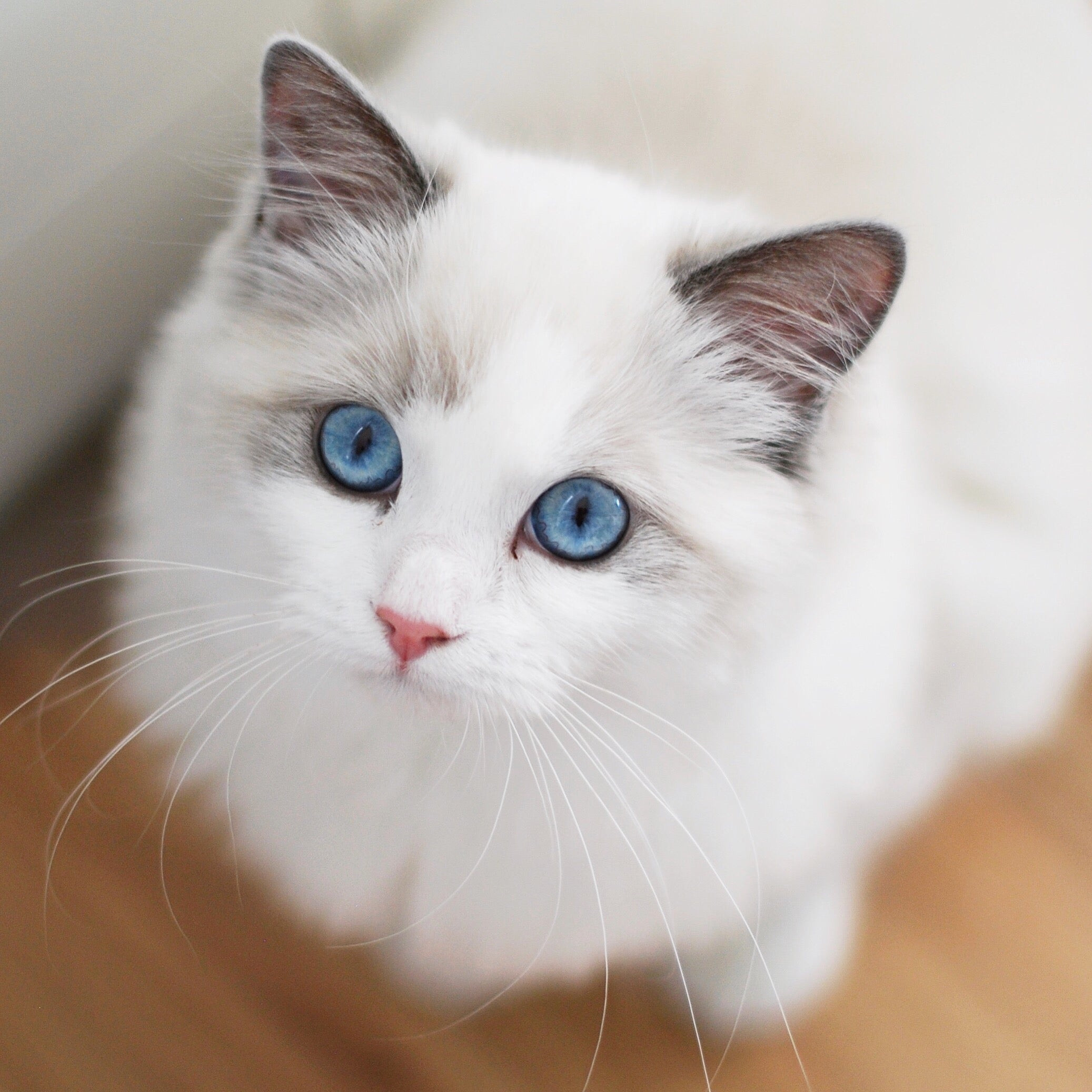 blue bicolor ragdoll
blue bicolor ragdoll
A blue bicolor Ragdoll cat with piercing blue eyes, exemplifying the breed’s characteristic striking blue eyes and bicolor coat pattern.
4. Long Lifespans: Years of Companionship
If you’re looking for a feline companion for the long haul, Ragdoll cats are an excellent choice. They boast a considerable lifespan, typically living between 15 and 20 years on average. Several factors can contribute to extending a Ragdoll’s life expectancy and ensuring they live their healthiest lives. These include providing a high-quality diet, ideally rich in raw meat, keeping them as indoor cats to protect them from outdoor hazards, neutering or spaying, and ensuring they receive consistent, high-quality veterinary care. Remarkably, some Ragdolls have even been known to live up to 25 years! It’s also worth noting that Ragdolls are a slow-maturing breed, not reaching full adulthood until around 4 years of age.
5. Health Considerations: Understanding HCM
Hypertrophic cardiomyopathy (HCM) is a significant health concern to be aware of with Ragdoll cats. HCM is the most prevalent cardiac disease in felines and is, unfortunately, more common in certain breeds, including Ragdolls. This condition involves a thickening of the heart muscle walls, which reduces the heart’s efficiency and can lead to various health complications, including sudden cardiac death. In Ragdolls, HCM is often hereditary, linked to specific genetic mutations within the breed. To minimize the risk of HCM, it’s crucial to choose a reputable breeder who screens their Ragdoll kittens for the HCM mutation. Responsible breeders will often guarantee that their kittens are HCM negative, providing peace of mind. Always prioritize obtaining your Ragdoll kitten from a well-established and ethical breeder.
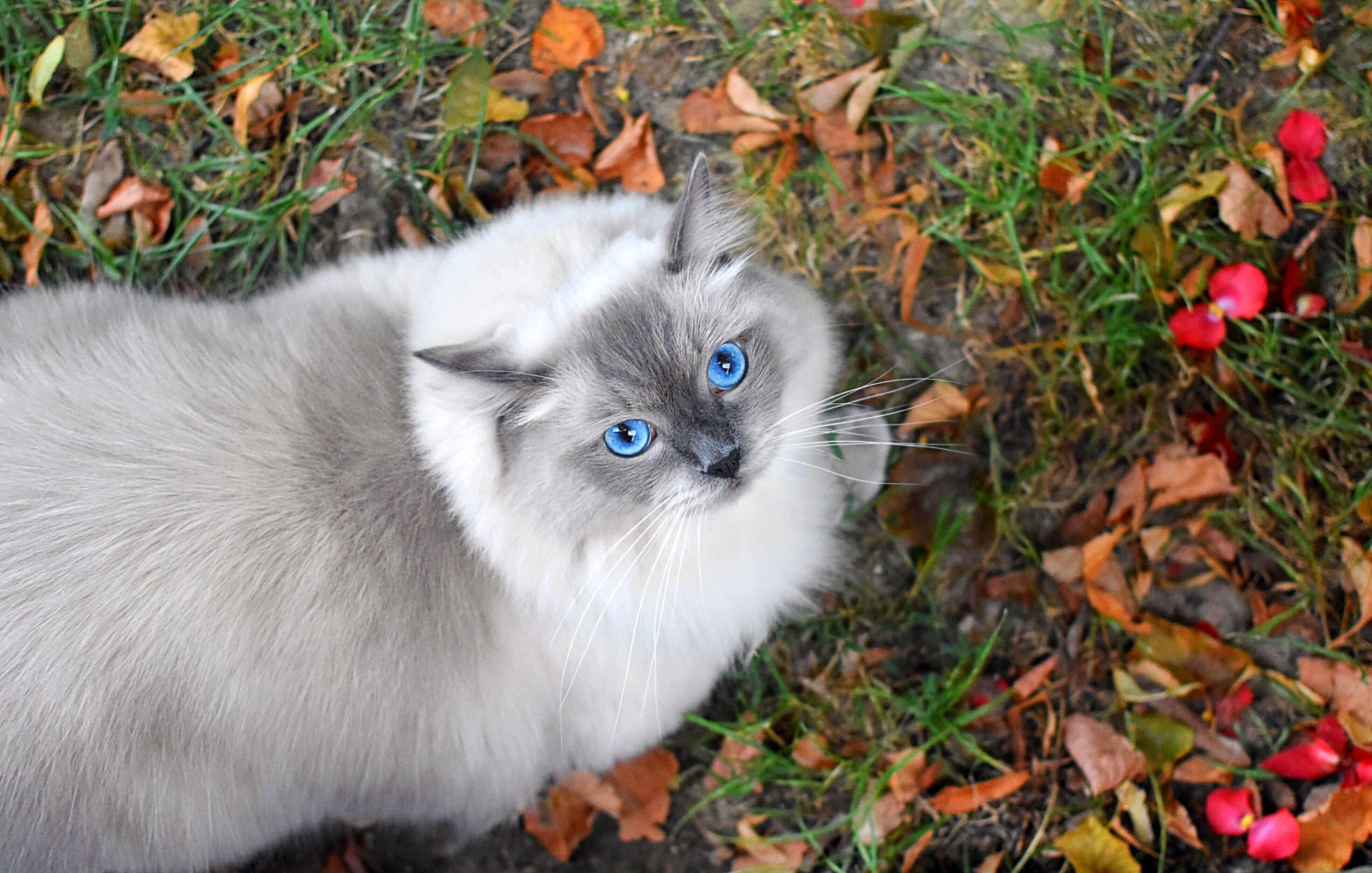 Blue Mitted Ragdoll
Blue Mitted Ragdoll
A blue mitted Ragdoll cat with striking blue eyes and white “mitted” paws, illustrating the mitted coat pattern and breed’s captivating gaze.
6. Social Needs: Ragdolls Thrive on Company
Ragdoll cats are not independent, solitary creatures; they are deeply social animals that dislike being alone for extended periods. They crave companionship and require significantly more attention than some other cat breeds. If your lifestyle involves frequent absences from home, consider getting a companion animal for your Ragdoll. Having another cat or a cat-friendly dog can provide crucial social interaction and prevent loneliness when you are at work or away. A lonely Ragdoll may exhibit destructive behaviors, such as excessive scratching of furniture or knocking items over, stemming from boredom and a lack of attention. Providing adequate companionship ensures your Ragdoll remains happy and well-adjusted. For example, getting a scratching post can redirect scratching behaviors to appropriate outlets.
Shop Scratching Post
Bringing home littermates, like my Ragdolls Teemo and Arya, who came from the same litter, has been an incredibly rewarding experience. They constantly interact, cuddling together, playing, and keeping each other company, highlighting the benefits of having two Ragdolls.
7. Size Matters: They are Big Cats!
Prepare to be impressed by the size of a fully grown Ragdoll cat – they are genuinely large felines! Male Ragdolls can reach up to 20 pounds in weight, while females typically range from 8 to 15 pounds. Despite their imposing size, Ragdolls are not known for aggression or strong hunting instincts, unlike some other cat breeds. Their gentle nature means they are not equipped to defend themselves effectively against outdoor dangers like stray dogs or other aggressive animals. Therefore, it’s safest to keep Ragdolls indoors, especially when you’re not present to supervise. Their substantial size, however, contributes to their exceptional cuddliness, making them wonderfully huggable, teddy-bear-like companions. When holding a Ragdoll, ensure you provide ample support with both arms due to their length and weight. Their larger size also necessitates larger accommodations, such as a bigger litter box and a spacious bed, like a cat cave, to ensure their comfort.
Shop Cat Cave
8. Shedding: Manageable with Regular Grooming
As a long-haired breed, Ragdoll cats do shed, so be prepared for some degree of cat hair around your home. The amount of shedding can fluctuate depending on factors like temperature, season, and diet. Ragdolls typically develop a thicker coat during the winter months, which they then shed in the spring as the weather warms up. Regular grooming is essential for managing shedding and preventing tangles and mats in their silky coats. Fortunately, most Ragdolls enjoy the bonding experience of grooming sessions. Daily brushing is recommended to minimize shedding and keep their coats healthy and beautiful.
9. Hypoallergenic Misconception: Not Allergy-Free
It’s a common misconception that Ragdoll cats are hypoallergenic, but unfortunately, this is not the case for individuals with cat allergies. While Ragdolls lack a thick undercoat, which can sometimes reduce dander (a common allergen), the primary allergen for most people allergic to cats is a protein found in cat saliva. When cats groom themselves, they deposit saliva all over their fur. This saliva-coated hair is then shed around the house, triggering allergic reactions in sensitive individuals. Therefore, if you have cat allergies, a Ragdoll cat is unlikely to be a hypoallergenic solution.
10. Cost of a Ragdoll: Quality and Ethical Breeding
Acquiring a purebred Ragdoll cat is an investment. In the United States, Ragdoll kittens from reputable breeders registered with The International Cat Association (TICA) typically range in price from $1,500 to $3,500. The cost can vary depending on factors such as the kitten’s quality (pet vs. show quality) and coat pattern. “Show quality” Ragdolls, those judged to closely meet the breed standard for physical appearance and temperament at cat shows, generally command a higher price than “pet quality” kittens, which may have minor cosmetic imperfections. Certain coat patterns, like the classic bicolor, can also influence the price, sometimes being more expensive. When considering a Ragdoll, it’s vital to understand that responsible and ethical breeding involves significant time and expense. Be cautious of kittens offered at prices that seem too good to be true, as this could be an indicator of unethical “backyard breeders.”
Two cream Ragdoll cats, Harvey and Olivia, comfortably nestled in a Coco Cat Bed, showcasing the breed’s relaxed and comfortable demeanor.
Thoroughly researching and understanding the Ragdoll breed is a crucial step in ensuring you are making an informed and responsible decision when welcoming one of these wonderful “rag dolls cat” into your life.

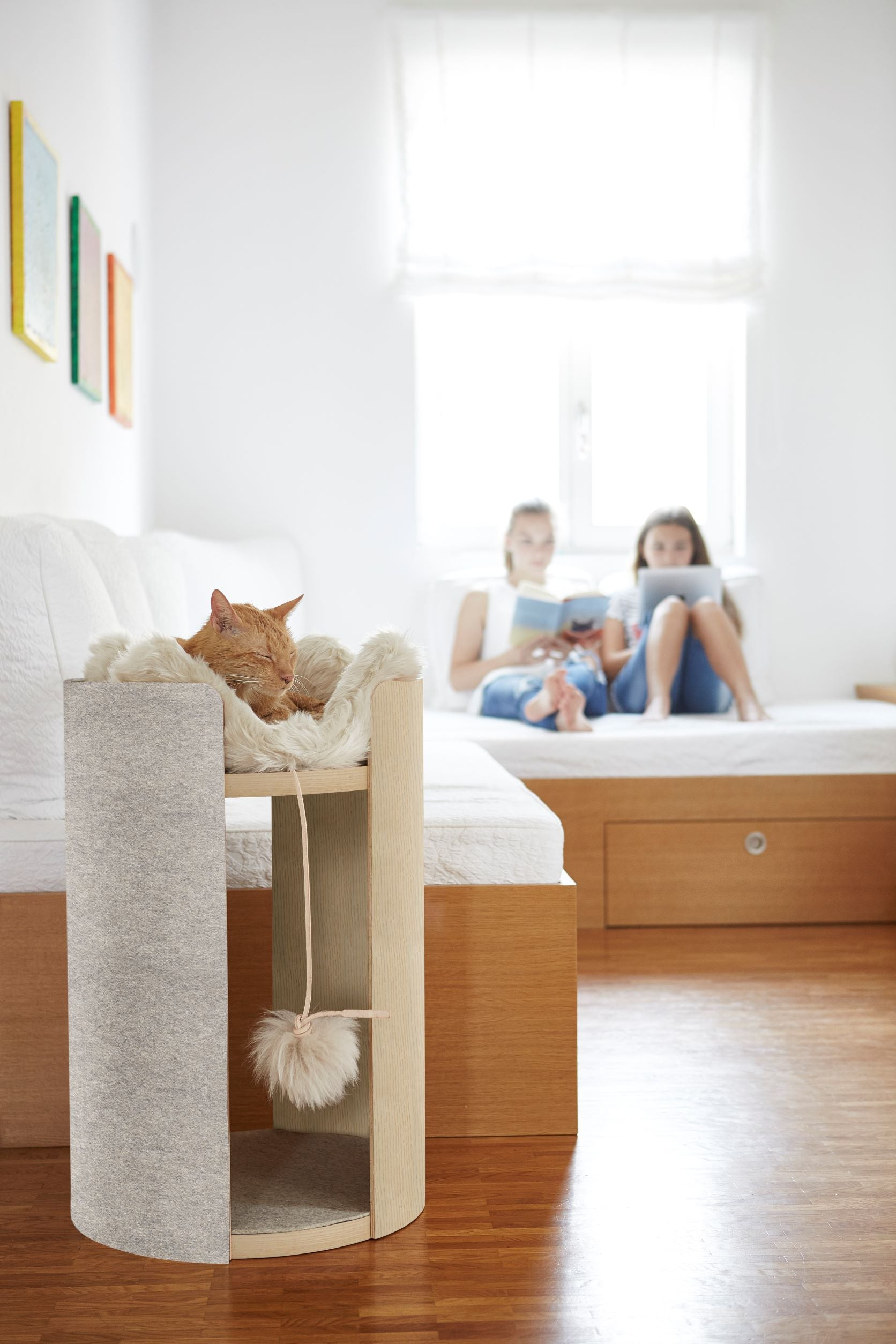
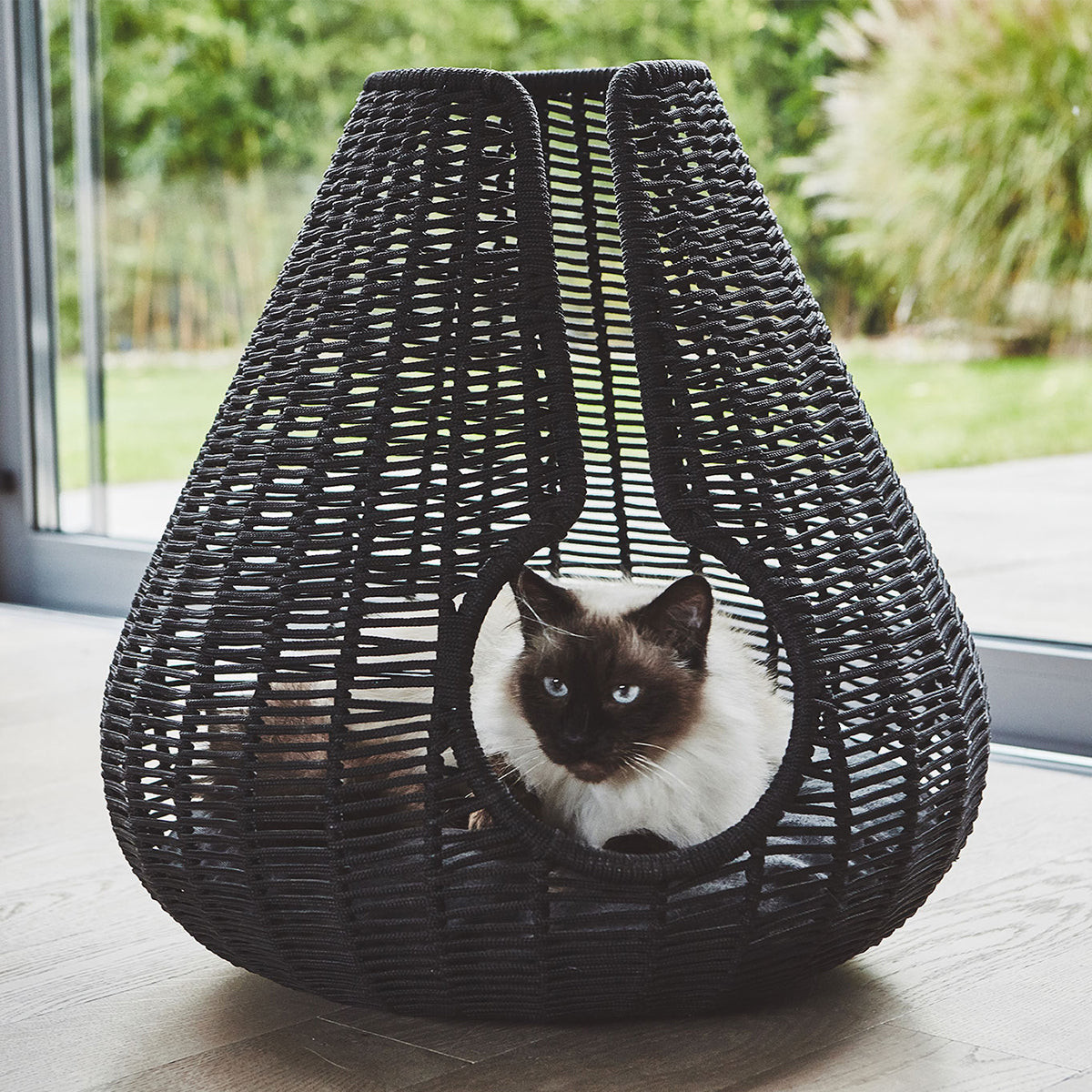 cat cave
cat cave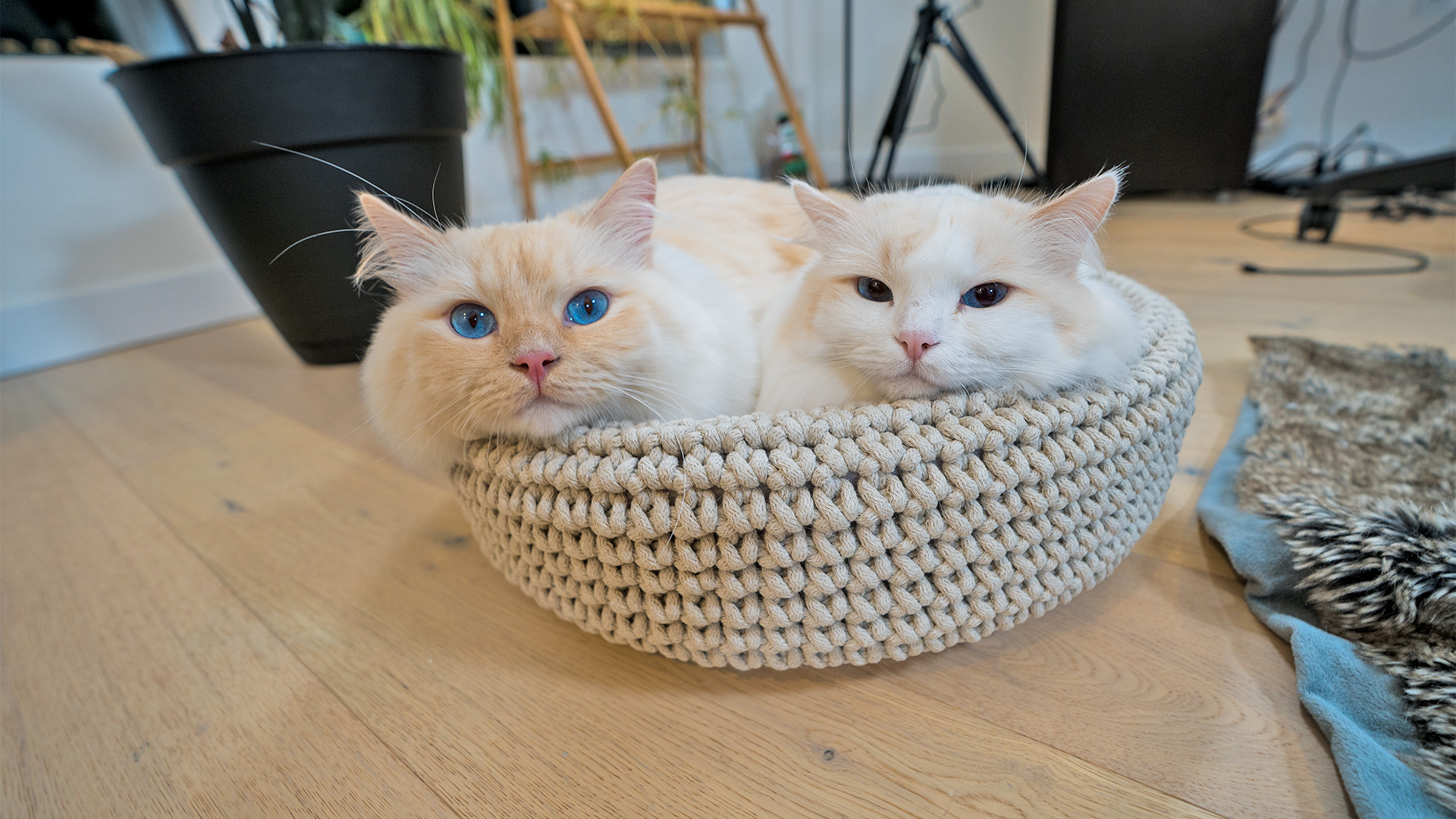 cream ragdoll cats
cream ragdoll cats